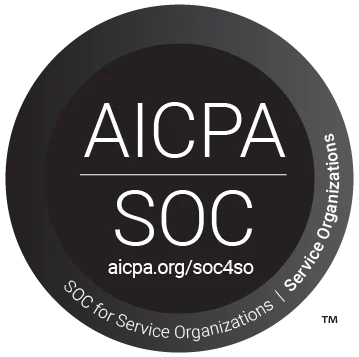Security is no longer just a line item on a checklist. It is the backbone of cloud success. For IT teams, CISOs, and partners navigating the transition to the cloud, building a secure environment from the ground up is critical. A single misconfiguration can expose sensitive data, disrupt business continuity, or create a compliance nightmare. That is why Clarity exists – to bring precision and foresight to every step of cloud security design.
In this guide, we break down the key principles, frameworks, tools, and practices that define secure cloud environments, giving IT leaders a blueprint they can trust.
The Foundation: Security by Design
At Clarity, we believe security must be intentional from day one. Rather than retrofitting protections after deployment, our approach starts with “secure by design” principles. This includes:
- Embedding security into cloud architecture reviews
- Using threat modeling in the planning phase
- Automating policy enforcement from infrastructure-as-code
The goal is to reduce human error, create consistency, and ensure repeatability across teams and cloud providers.
Step 1: Identity and Access Management (IAM)
IAM is the gatekeeper of cloud environments. Poorly configured IAM is often the root cause of breaches. A secure IAM strategy includes:
- Role-based access controls (RBAC)
- Least privilege enforcement
- Multi-factor authentication (MFA)
- Lifecycle management of users and service accounts
- Integration with identity providers (IdPs)
Clarity helps organizations audit existing IAM policies and implement centralized identity strategies that reduce risk while enabling user productivity.
Step 2: Network Security Architecture
In traditional environments, network security focused on perimeter defenses. In the cloud, where perimeters are blurred, security must be more dynamic. Key design elements include:
- Virtual private clouds (VPCs) and subnets with segmentation
- Zero-trust network architecture (ZTNA)
- Secure ingress and egress control using firewalls and gateways
- DNS security and traffic inspection
- Microsegmentation and service mesh implementations
Clarity designs scalable, secure networks that support hybrid and multi-cloud connectivity while minimizing exposure.
Step 3: Encryption and Key Management
Encryption is a baseline expectation, not a bonus. Organizations must protect data at rest, in transit, and in use.
Clarity guides clients to:
- Use managed encryption services (e.g., KMS, CloudHSM)
- Rotate keys regularly
- Enforce encryption by policy
- Secure APIs and backup processes
Data security depends not just on encryption, but on disciplined key lifecycle management.
Step 4: Cloud Security Posture Management (CSPM)
CSPM tools provide real-time visibility into misconfigurations and compliance gaps. They automate discovery and alerting, freeing teams to focus on resolution. Clarity helps select and implement CSPM solutions that:
- Monitor assets across regions and accounts
- Benchmark against CIS, NIST, or custom frameworks
- Prioritize risk-based findings
- Provide automated remediation where appropriate
Our approach is proactive – detect and fix before attackers exploit.
Step 5: Vulnerability Management and Patching
Cloud environments evolve rapidly. So must your approach to patching and vulnerability scanning. Clarity deploys automated scanners and integrates them with CI/CD pipelines to:
- Identify OS, application, and container vulnerabilities
- Classify by severity and exploitability
- Trigger remediation workflows
We embed security testing into the development lifecycle to catch issues early and often.
Step 6: Logging, Monitoring, and Incident Response
Detection without response is like a smoke alarm with no fire extinguisher. A secure cloud is one that can react quickly.
Clarity builds logging and monitoring systems that include:
- Centralized log aggregation with SIEM integration
- Cloud-native telemetry (e.g., CloudTrail, Stackdriver, GuardDuty)
- Real-time alerts with automated workflows
- Runbooks and escalation procedures
Our clients benefit from faster incident resolution and continuous learning from every alert.
Step 7: Compliance and Governance
Regulated industries must meet strict standards for data handling and reporting. Clarity simplifies compliance by mapping controls to frameworks such as:
- SOC 2
- HIPAA
- PCI DSS
- ISO 27001
We provide tools that generate audit-ready reports, streamline documentation, and give teams the confidence to scale securely.
Step 8: Secure DevOps and Infrastructure as Code (IaC)
DevOps should not mean dev-only security. Clarity empowers developers to build safely by:
- Scanning IaC templates for security issues
- Implementing guardrails in CI/CD pipelines
- Using policy-as-code to enforce standards
- Versioning infrastructure securely
Security becomes a shared responsibility – without slowing down innovation.
Bonus: Building a Security Culture
Technology alone is not enough. The most secure environments are supported by a workforce that understands the stakes and acts accordingly. Clarity offers tailored training for IT teams and executives covering:
- Cloud security awareness
- Real-world threat scenarios
- Secure coding practices
- Executive tabletop exercises
From the boardroom to the terminal, we help build a culture that prioritizes resilience.
The Clarity Approach: Security as a Business Enabler
Too often, security is seen as a barrier to speed. We see it differently. With the right architecture, automation, and education, security becomes a strategic advantage. It enables compliance, accelerates delivery, and protects brand trust.
Clarity works alongside your teams to:
- Align security strategy with business objectives
- Prioritize risks based on impact
- Build for both scalability and sustainability
Final Thoughts: Bring Clarity to Cloud Security
A secure cloud environment is not built overnight. It requires vision, strategy, and execution. Clarity provides all three. We help organizations design and operate cloud environments that are secure from the start and resilient into the future.
Ready to secure your cloud with confidence? Let Clarity guide the way – from policy to production, governance to growth.

